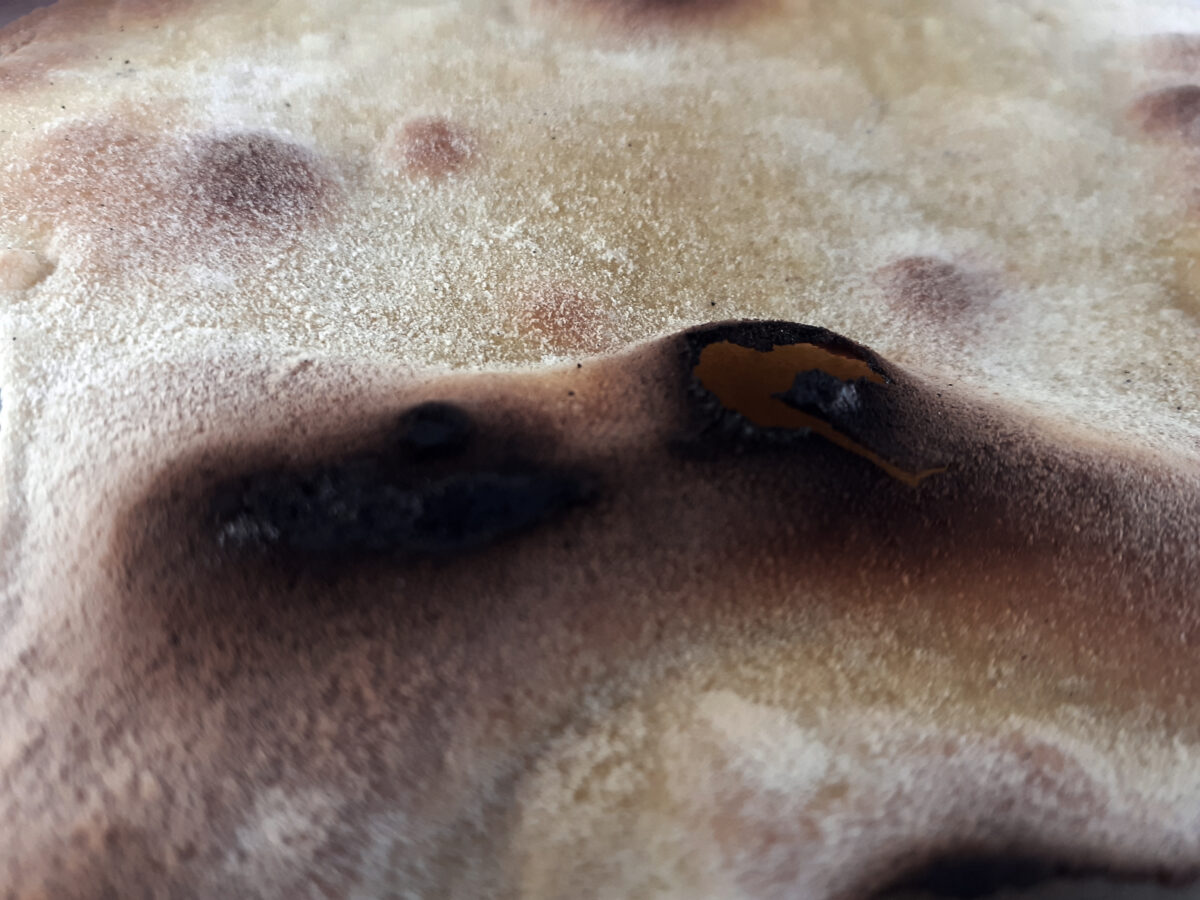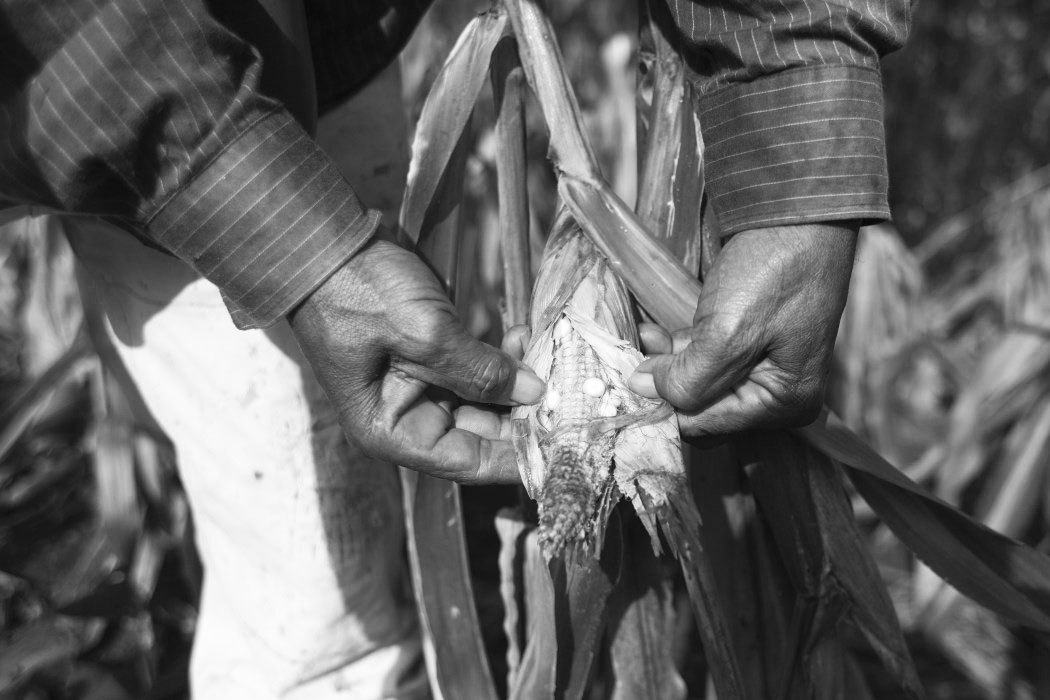Tortillas with salt
“I’m lucky if I can find pumpkin flowers. But mostly, we just eat tortillas.” *1
Martina García grinds just enough corn to make a handful of tortillas. She sprinkles them with salt and serves them for breakfast to her children and grandchild. At 40 years old, García must ration the last few bags of corn cobs her family has left after the drought and prolonged heatwaves linked to the climate crisis that have devastated crops across Guatemala. *1
The hardest-hit are the poor, indigenous villagers in the so-called Dry Corridor, which stretches across Guatemala, El Salvador, Honduras, and Nicaragua. Central America is considered one of the most dangerous regions in the world outside of war zones. Violence, poverty, and corruption force people to flee north. Now, the mix includes drought driven by climate change, resulting in hunger and a struggle over dwindling natural resources. These latter issues are now seen as the primary drivers of the exodus. Hunger is not new in Guatemala, but the difficulties have been compounded by climate change, and long-ignored and repressed communities no longer have the capacity to cope with them.
Tortillas with salt:
Tortillas are a staple food in Guatemala and form the basis of many meals. Even in difficult conditions where resources are limited, tortillas can be made using a few simple ingredients and tools.
Here’s a basic recipes for making tortillas under impoverished conditions:
Recipe #1:
Ingredients:
- Masa harina: Corn flour made from dried and ground corn, which is the basis for making tortillas. If masa harina is not available, corn can be ground by hand, though this is time-consuming.
- Water: Clean, preferably boiled water.
Preparation:
Preparing the dough:
- In a large bowl, mix masa harina with water. For every cup of masa harina, add about 1/2 cup of water.
- Mix until the dough is smooth and uniform. The dough should not be too dry or too sticky. Add more water or flour as needed.
Forming the tortillas:
- Take a small piece of dough and form it into a ball about the size of a ping-pong ball.
- Flatten the ball between your hands to form a round, flat tortilla. If you have a tortilla press, you can use it, but hand-formed tortillas are more traditional in poorer households.
Cooking:
- Heat a comal (flat, metal griddle) or a large, dry pan over medium heat. If you don’t have a comal, any flat surface over a fire will do.
- Place the tortilla on the hot surface and cook for about 1-2 minutes on each side until it develops a golden crust. The tortilla should puff up slightly. If you have access to a minimal amount of oil, you can lightly grease the surface, but this is not necessary.
Serving:
- Tortillas are best eaten fresh, right after cooking. They can be eaten alone with salt or served as an accompaniment to other dishes like beans, vegetables, or simple salsas.
Notes:
- In conditions of extreme poverty, masa harina can be substituted with another local flour or even ground corn, although traditional tortillas are always made from corn.
- It is important to use minimal amounts of water and flour to ensure resources are conserved.
This method allows for the preparation of a simple, nutritious meal using minimal ingredients and tools.
Recipe #2:
Ingredients:
- Corn
- Lime
- Water
- Salt
Preparation:
“Tortillas are a staple in the Q’eqchi’ diet and require a special preparation method. Approximately every two days, women husk between 7 to 9 kilograms of corn, depending on the household size. The corn is then boiled for several hours over a fire in a solution of water and lime. Apparently, lime helps to break down the hard kernels, prevents the corn from spoiling, and adds necessary protein. There are two methods for ‘nixtamalizing’ the corn with lime. One involves adding a full handful of lime to cold water; when the mixture begins to boil, the corn is added. Others prefer to add the corn and lime simultaneously to cold water so that everything cooks together. Regardless of the method, plenty of water should be added (it should reach at least 10 cm above the corn). It needs to cook until the hard husks of the corn fall off. The corn is stirred using a special stick called ‘kojl.’ Before grinding the corn, the women must thoroughly wash the kernels using a special gourd with holes (called ‘chaab’ jom’) or a plastic colander. Then, the corn is ground using a hand mill (maaq) or a diesel-powered mill (called moliin or molino). Even after passing through these mills, the corn dough remains somewhat coarse, so some women opt to re-grind it manually on a grinding stone. While some women can shape tortillas using only their hands, almost everyone forms flat corn cakes on a piece of plastic. The tortillas are immediately toasted on both sides on a metal or clay stove (essentially a type of griddle) heated over a wood fire. The tortillas are toasted first on one side, then the other, and finally flipped back to the original side. During the third turn, a well-made corn tortilla should puff up with hot air. The women place the cooked tortillas in a basket lined with cloth to keep them warm until all the tortillas are finished. Girls learn how to make tortillas at a very young age through hours of practice with their mothers.” *2
Sources:
- The Guardian
- FROM THE Q’EQCHI’ KITCHEN Recipes of Traditional Corn, Forest, and Milpa Foods from the Sarstoon-Temash Villages
Photos:
1.Karolina Brzuzan
2. http://www.entremundos.org/revista/environment/climate-change-our-agriculture-dynamics-and-protecting-the-forests/?lang=en



